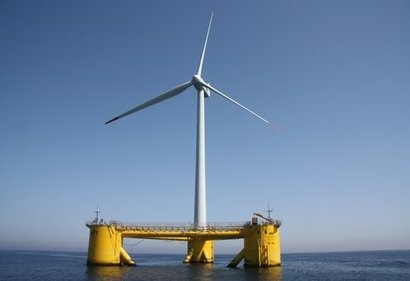
The wind industry has a strong focus on the development of floating offshore wind turbines but it is still missing a widely recognised and unified approach to practical methods of building and validating the numerical models, in accordance with the requirements in the standards. Standardisation is a key milestone to guide the industry towards the development of reliable floating wind turbines.
Guidance includes setting up minimum requirements for the design on new concepts that can help investors’ evaluation, and supporting the more mature technologies towards a safe and secure commercialisation.
The project is the first of its kind, bringing together multiple stakeholders from the wind, oil & gas and maritime industries, making it the most interdisciplinary project that engages in the technical advancement for floating offshore wind projects to date. The participants come from a broad range of industries, including utilities, component manufacturing, engineering consultants, maritime research institutes, shipyards and academic research.
“Ramboll supports this joint industry project and will contribute to this effort by providing our knowledge and experience in the design and analysis of floating wind turbines, covering coupled simulation as well as our structural, mooring and cable expertise” said floating wind turbine specialist Denis Matha from Ramboll. “We expect that this project will provide an excellent platform to jointly develop a Recommended Practice by addressing the key issues and bringing together the expertise of key stakeholders.”
Luca Vita, Project Manager of the Joint Industry Project and Senior Engineer at DNV GL – Energy, Renewables Certification, added that the analysis of floating wind turbines is a complex challenge that requires the integration of different technologies and disciplines. The lack of a common agreement on the optimal approach to conduct these analyses during the different stages of the design process adds potential risk factors and time delays in the project development, but also in the cost evaluation of new conceptual designs. Mr Vita said that the project provides a unique platform to mutually develop an invaluable Recommended Practice which will be beneficial to each industry stakeholder, taking the wide-ranging spectrum of interdisciplinary skills and business objectives of each participant into account.
The new Recommended Practice will build on the experience from the application of the Offshore Standard DNV-OS-J103 “Design of Floating Wind Turbine Structures“ which was published in 2013 and will contain methods and ways to fulfil the requirements set in DNV-OS-J103. Since its publication, the offshore standard DNV-OS-J103 has been broadly used for the design of floating wind turbine structures. At the time of publication, the practical experiences in the field of floating offshore wind energy have been rather limited in providing reliable information on validating numerical models for the turbine construction and reliable insight on the level of complexity required at each individual project stage. Over the last three years, the industry has greatly advanced moving the commercialisation of the new technology forward, as the world’s first floating wind farm demonstration projects have since been launched.
Based on the latest knowledge and practical know-how, the joint approach of developing the future Recommended Practice will greatly reduce the risk of inadequate analysis, leading to substantial time savings. Further advantages stem from the focus on the design of floating wind turbines and the validation of numerical models in respect to their subsequent certification. The coherent structure of the Recommended Practice also provides a unified cost structure for the project development process.
DNV GL is the world’s largest resource of independent energy experts, providing classification and technical assurance along with software and independent expert advisory services to the maritime, oil & gas and energy industries.
For additional information:

